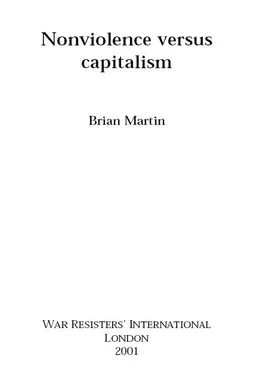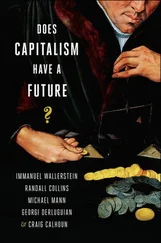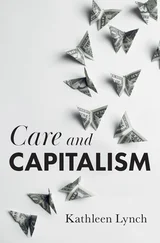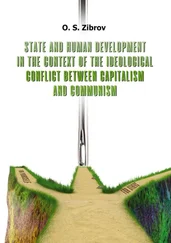Ruthlessness — namely, the psychology of the ruler — may not be the key factor. Instead, the real issue is how to make the ruler dependent in some way on the nonviolent resisters. This might be economic dependence or it could be the influence of family members who know people in the resistance. If there is a dependency relationship, then the ruler will encounter great obstacles if severe repression is used, because pressure will increase on the ruler. But if there isn’t some direct or indirect connection between the two sides, then even a fairly benevolent ruler may do really nasty things. [19] . Ralph Summy, “Nonviolence and the case of the extremely ruthless opponent,” Pacifica Review, Vol. 6, No. 1, May-June 1994, pp. 1-29.
The issue of severe repression highlights the issue of suffering. In the Gandhian tradition, suffering by nonviolent activists is a primary mechanism for the effectiveness of nonviolent action, since recognition of this suffering is supposed to “melt the hearts” of opponents. Acceptance of the inevitability of suffering has been criticised, especially by feminists, as perpetuating submissive and dependent orientations that have been imposed on subordinate groups for too long. A more pragmatic response is to note that suffering is seldom effective in converting those dispensing violence. In the case of the 1930 salt satyagraha, the police who brutally attacked protesters were not greatly deterred by the suffering they caused. However, the campaign was influential due to impact on people around the world who read about it through the reports of journalist Webb Miller. [20] . Thomas Weber, “’The marchers simply walked forward until struck down’: nonviolent suffering and conversion,” Peace & Change , Vol. 18, No. 3, 1993, pp. 267-289.
So the key to winning over others was a chain of observers and communicators who passed on information about the campaign until it reached those who were ultimately responsible, in this case the British government. This process has been called the “great chain of nonviolence.” [21] . Johan Galtung, “Principles of nonviolent action: the great chain of nonviolence hypothesis,” in Nonviolence and Israel/Palestine (Honolulu: University of Hawaii Institute for Peace, 1989), pp. 13-33.
Not all methods of nonviolent action open activists to physical attack. Boycotts, for example, are relatively safe compared to sit-ins. If repression is harsh, methods and tactics need to be specially chosen. More use can be made of quiet “mistakes” in carrying out tasks and “misunderstandings” of orders. Preparation in advance is crucial for things such as shutting down factories, protecting dissidents, providing food and shelter for survival, maintaining communications and exposing repression to the world. When support for the resistance becomes widespread, open defiance becomes possible.
In many countries, challenging capitalism is not as likely to lead to brutal physical attacks as would, for example, opposing a harsh dictatorship. In the normal operation of capitalism, suffering is imposed through economic mechanisms, such as job losses, destruction of livelihoods, injuries on the job and harm from dangerous products. As will be seen in later chapters, dealing with capitalist repression is less difficult than dealing with the attractions of the consumer society.
Nonviolent action is often thought of as just a set of methods, but it also is the basis for a way of life. There are several ways to approach this. One is the constructive programme, part of Gandhi’s legacy. It involves taking positive measures to overcome poverty, discrimination, exploitation and other social ills by grassroots efforts to build supportive and vibrant communities. Nonviolent action is often a “negative” process: it is used against systems of domination. The essential complementary process is the building of systems without domination.
The constructive programme can be interpreted as a programme of service, namely support and aid for those in greatest need. Another dimension of creating a nonviolent society is the creation of social, political and economic arrangements that minimise oppression. This might be called the “institution building” side of the constructive programme. It includes, for example, workplaces in which workers and community members make decisions about what to produce and how work is done. There is more on this in chapter 5, which covers nonviolent alternatives to capitalism.
Yet another dimension to a nonviolent society is appropriate technology. [22] . Godfrey Boyle, Peter Harper and the editors of Undercurrents (eds.), Radical Technology (London: Wildwood House, 1976); Ken Darrow and Mike Saxenian (eds.), Appropriate Technology Sourcebook: A Guide to Practical Books for Village and Small Community Technology (Stanford, CA: Volunteers in Asia, 1986); Ivan Illich, Tools for Conviviality (London: Calder & Boyars, 1973)
Technology, which includes everything from hoes, shoes, televisions and needles to jet aircraft and supercomputers, is both a product of society and a reflection of political and economic values. Some technologies are more supportive of a nonviolent society than others. For example, interactive communication media such as the post, telephone and email provide fewer opportunities for domination than do one-directional media such as newspapers and television. One way to help build a nonviolent society is by choosing and developing technologies that support self-reliance. [23] . Johan Galtung, Peter O’Brien and Roy Preiswerk (eds.), Self-Reliance: A Strategy for Development (London: Bogle-L’Ouverture, 1980).
This outline gives only the briefest introduction to possibilities for a nonviolent society. The point is that nonviolent action as a method is only one part of the picture. The method needs to be tied to an alternative.
The consent theory of power
Gandhi approached nonviolent action as a moral issue and, in practical terms, as a means for persuading opponents to change their minds as a result of their witnessing the commitment and willing sacrifice of nonviolent activists. While this approach explains some aspects of the power of nonviolent action, it is inadequate on its own. Moral persuasion sometimes works in face-to-face encounters, but has little chance when cause and effect are separated. Bomber pilots show little remorse for the agony caused by their weapons detonating far below, [24] . For an excellent treatment of the psychodynamics of killing, see Dave Grossman, On Killing: The Psychological Cost of Learning to Kill in War and Society (Boston: Little, Brown, 1995).
while managers of large international banks have little inkling of the suffering caused by their lending policies in foreign countries.
For insight into both the strengths and weaknesses of nonviolent action, in particular for dealing with capitalism, it is useful to turn to the consent theory of power, proposed by Gene Sharp as the theoretical foundation for his study of the politics of nonviolent action. [25] . See especially Gene Sharp, The Politics of Nonviolent Action (Boston: Porter Sargent, 1973), pp. 7-62 and Gene Sharp, Social Power and Political Freedom (Boston: Porter Sargent, 1980), pp. 21-67 and 309-378. The following analysis is drawn from, and includes extracts from, Brian Martin, “Gene Sharp’s theory of power,” Journal of Peace Research, Vol. 26, No. 2, 1989, pp. 213-222.
Sharp is the world’s foremost nonviolence scholar. Although his work has received little attention from other scholars, it is enormously influential in nonviolence circles. His theory of power is often presented as the theory component in nonviolent action training.
Читать дальше

![Brian Jacques - Martin the Warrior [Redwall 6]](/books/128385/brian-jacques-martin-the-warrior-redwall-6-thumb.webp)










